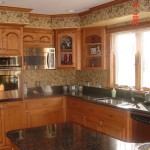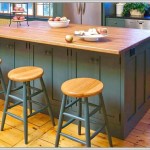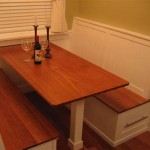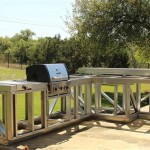What Grit to Sharpen Kitchen Knives: A Comprehensive Guide
The sharpness of a kitchen knife significantly impacts both the efficiency and safety of food preparation. A dull knife requires more force, increasing the likelihood of slippage and potential injury. Maintaining a sharp edge is therefore crucial. This maintenance necessitates understanding the appropriate grit levels of sharpening stones required to achieve and preserve a keen blade.
Sharpening stones are categorized by grit, a numerical value indicating the density of abrasive particles on the stone's surface. Lower grit numbers signify coarser stones, designed for repairing damaged edges or significantly dull blades. Higher grit numbers represent finer stones used for refining edges and polishing for optimal sharpness. Selecting the correct grit progression is vital for effective knife sharpening.
The process of sharpening knives is essentially controlled abrasion. The sharpening stone removes microscopic amounts of metal from the blade's edge, reshaping it to a sharper profile. The coarser the grit, the more material is removed with each pass. Conversely, finer grits remove minimal material, focusing on aligning and polishing the newly formed edge.
Understanding the Grit Scale and Its Application
The grit scale uses numbers to signify the density of abrasive particles per unit area. There are two primary standards for grit measurement: Japanese Industrial Standards (JIS) and the Federation of European Producers of Abrasives (FEPA). While both measure grit size, they do not directly correlate, and conversions can be imprecise. For kitchen knife sharpening, JIS is more commonly referenced, particularly when discussing Japanese water stones.
A JIS #220 grit stone is considered very coarse and is primarily used for repairing damaged blades, such as those with chips or severely rolled edges. This grit removes a significant amount of steel and should only be used when necessary. Regular sharpening should never require a grit this coarse.
A JIS #400 grit stone is still considered coarse but is suitable for reshaping a dull blade that has lost its edge. It removes material more quickly than finer grits, making it effective for establishing a new bevel angle. However, the resulting edge will be rough and require further refinement.
A JIS #1000 grit stone is often considered the starting point for general sharpening. It removes material at a moderate rate, capable of restoring sharpness to a blade that is reasonably maintained. This grit is suitable for sharpening knives that are dull but not severely damaged. The resulting edge will be sharp enough for most kitchen tasks but can benefit from further refinement.
A JIS #3000 grit stone bridges the gap between sharpening and polishing. It refines the edge created by coarser stones, removing the scratches left behind and improving the overall sharpness. An edge sharpened to #3000 grit will be significantly sharper and smoother than one sharpened only to #1000 grit.
A JIS #5000 to #8000 grit stone is considered a polishing stone. These stones are used to achieve a very fine, highly polished edge. They remove minimal material, focusing on aligning the microscopic imperfections on the blade's edge. High-grit stones produce a razor-sharp edge that excels at slicing and delicate tasks.
Stones with a grit value of JIS #10,000 or higher are considered for ultra-fine polishing, often employed by professional chefs or those seeking the absolute sharpest possible edge. These stones demand a high level of sharpening skill and are generally not necessary for everyday kitchen use.
Selecting the Right Grit Progression
The appropriate grit progression depends on the condition of the knife. A knife that is only slightly dull may only require a single pass on a honing steel or a fine polishing stone. A knife that is considerably duller will require a multi-step process, starting with a coarser grit and progressing to finer grits.
For a moderately dull knife, a common progression would be #1000 grit followed by #3000 grit. This provides a balance between material removal and edge refinement. If the knife is significantly duller, a #400 grit stone can be used before moving to the #1000 and #3000 grits. A final polish on a #5000 or #8000 grit stone can further enhance the sharpness.
A severely damaged knife might require starting with a #220 or #400 grit stone. After reshaping the edge, the process should continue with #1000, #3000, and potentially a higher grit polishing stone. It is essential to remove all scratches from the previous grit before moving on to the next. Failure to do so will result in a less-than-optimal edge.
The frequency of sharpening also influences the required grit progression. Knives that are sharpened regularly may only require a touch-up with a fine or polishing stone. Knives that are infrequently sharpened will likely require a more aggressive approach, starting with a coarser grit.
Factors to Consider When Choosing Sharpening Stones
Beyond grit selection, several factors influence the effectiveness and suitability of a sharpening stone. These include the type of abrasive material, the binder used to hold the abrasive particles together, and the stone's overall size and construction.
Sharpening stones can be made from natural or synthetic materials. Natural stones, such as Arkansas stones, are traditionally used for fine polishing. Synthetic stones offer greater consistency in grit size and are available in a wider range of grits. Common synthetic abrasives include aluminum oxide and silicon carbide.
The binder used to hold the abrasive particles together affects the stone's cutting speed and wear resistance. Softer binders release abrasive particles more readily, allowing for faster sharpening but also leading to quicker wear. Harder binders retain abrasive particles longer, resulting in slower sharpening but greater durability. Water stones, which use a relatively soft binder, are known for their fast cutting action.
The size of the sharpening stone also impacts usability. Larger stones provide a greater surface area, making it easier to maintain a consistent sharpening angle. Smaller stones are more portable but may require more precision and control. A stone that is at least 8 inches long and 2 inches wide is generally recommended for kitchen knife sharpening.
Maintaining sharpening stones is crucial for their longevity and performance. Water stones require soaking in water before use, while oil stones are lubricated with honing oil. After use, stones should be cleaned and stored properly to prevent contamination and damage. Flattening stones regularly is essential to maintain a consistent sharpening surface. A flattening stone, or lapping plate, is used to remove uneven wear and ensure the sharpening stone remains flat.

Sharpening How Many Whetstones And What Diffe Grits Do I Need Seasoned Advice

A Comprehensive Guide To Choosing Sharpening Grits

5 Ways To Sharpen Kitchen Knives With Sandpaper Wikihow

How To Sharpen Kitchen Knives The Best Way

Sharp Pebble What Is The Best Grit To Sharpen A Knife

How To Sharpen Kitchen Knives With
:max_bytes(150000):strip_icc()/__opt__aboutcom__coeus__resources__content_migration__serious_eats__seriouseats.com__images__20100423-sharpening20-2004-aba6e6fa129844a7a106fa006eb98c3d.jpg?strip=all)
How To Sharpen A Knife With Whetstone

Knife Sharpening Stone Doublesided Sharpener Fine Medium Grit Whetstone

How To Sharpen A Chef Knife With Whetstone In 2024 Kyoku Knives

How To Sharpen A Knife With Whetstone Katto
Related Posts








